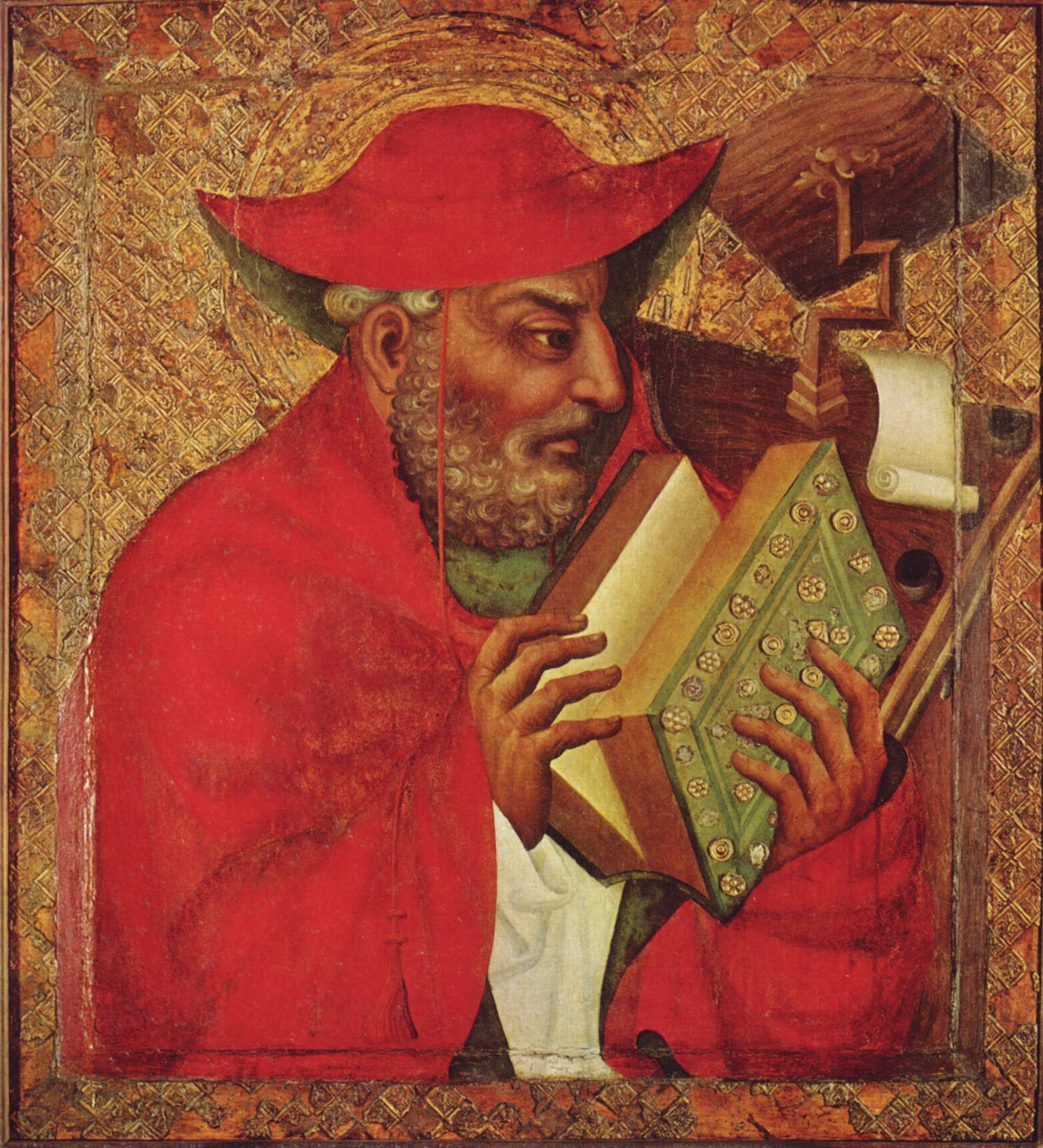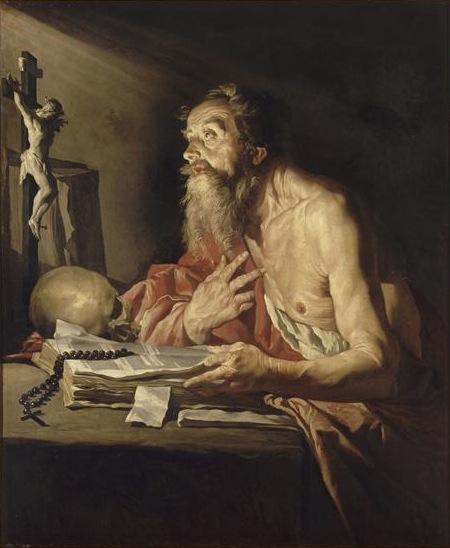|
Jerome
Jerome (; ; ; – 30 September 420), also known as Jerome of Stridon, was an early Christian presbyter, priest, Confessor of the Faith, confessor, theologian, translator, and historian; he is commonly known as Saint Jerome. He is best known for his translation of the Bible into Latin (the translation that became known as the Vulgate) and his commentaries on the whole Bible. Jerome attempted to create a translation of the Old Testament based on a Hebrew version, rather than the Septuagint, as Vetus Latina, prior Latin Bible translations had done. His list of writings is extensive. In addition to his biblical works, he wrote polemical and historical essays, always from a theologian's perspective. Jerome was known for his teachings on Christian moral life, especially those in cosmopolitan centers such as Rome. He often focused on women's lives and identified how a woman devoted to Jesus should live her life. This focus stemmed from his close patron relationships with several pro ... [...More Info...] [...Related Items...] OR: [Wikipedia] [Google] [Baidu] |
Vulgate
The Vulgate () is a late-4th-century Bible translations into Latin, Latin translation of the Bible. It is largely the work of Saint Jerome who, in 382, had been commissioned by Pope Damasus I to revise the Gospels used by the Diocese of Rome, Roman Church. Later, of his own initiative, Jerome extended this work of revision and translation to include most of the books of the Bible. The Vulgate became progressively adopted as the Bible text within the Western Church. Over succeeding centuries, it eventually eclipsed the texts. By the 13th century it had taken over from the former version the designation (the "version commonly used") or for short. The Vulgate also contains some ''Vetus Latina'' translations that Jerome did not work on. The Catholic Church affirmed the Vulgate as its official Latin Bible at the Council of Trent (1545–1563), though there was no single authoritative edition of the book at that time in any language. The Vulgate did eventually receiv ... [...More Info...] [...Related Items...] OR: [Wikipedia] [Google] [Baidu] |
De Viris Illustribus (Jerome)
''De Viris Illustribus'' (''On Illustrious Men'') is a collection of short biographies of 135 authors, written in Latin, by the 4th-century Latin Church Father Jerome. He completed this work at Bethlehem in 392–393 AD. The work consists of a prologue plus 135 chapters, each consisting of a brief biography. Jerome himself is the subject of the final chapter. A Greek version of the book, possibly by the same Sophronius who is the subject of Chapter 134, also survives. Many biographies take as their subject figures important in Christian Church history and pay especial attention to their careers as writers. It "was written as an apologetic work to prove that the Church had produced learned men." The book was dedicated to Flavius Lucius Dexter, who served as high chamberlain to Theodosius I and as praetorian prefect to Honorius. Dexter was the son of Saint Pacianus, who is eulogized in the work. Contents Listed below are the subjects of Jerome's 135 biographies. The nu ... [...More Info...] [...Related Items...] OR: [Wikipedia] [Google] [Baidu] |
Perpetual Virginity Of Mary
The perpetual virginity of Mary is a Christian doctrine that Mary, the mother of Jesus, was a virgin "before, during and after" the birth of Christ. In Western Christianity, the Catholic Church adheres to the doctrine, as do some Lutherans, Anglicans, Reformed, and other Protestants. In Eastern Christianity, the Oriental Orthodox Churches and the Church of the East both adhere to this doctrine as part of their ongoing tradition, and Eastern Orthodox churches recognize Mary as ''Aeiparthenos'', meaning "ever-virgin". It is one of the four Marian dogmas of the Catholic Church. Most modern nonconformist Protestants reject the doctrine. The extant written tradition of the perpetual virginity of Mary first appears in a late 2nd-century text called the Protoevangelium of James. The Second Council of Constantinople in 553 gave her the title "Aeiparthenos", meaning Perpetual Virgin, and at the Lateran Synod of 649 Pope Martin I emphasized the threefold character of the perpetual vir ... [...More Info...] [...Related Items...] OR: [Wikipedia] [Google] [Baidu] |
Stridon
Stridon () was a town in the Roman province of Dalmatia, of unknown location, best known as the birthplace of Saint Jerome. In 379, the town was destroyed by the Goths. Jerome wrote about it in his work '' De viris illustribus'': "Jerome was born to his father Eusebius, n thetown of Strido, which the Goths overthrew, and was once at the border between Dalmatia and Pannonia." ("''Hieronymus patre Eusebio natus, oppido Stridonis, quod a Gothis eversum, Dalmatiae quondam Pannoniaeque confinium fuit...''"). Location The exact location of Stridon is unknown. It is possible Stridon was located either in modern Croatia or Slovenia. Possible locations are the vicinity of Ljubljana, Starod (Slovenia), Sdrin, Štrigova, Zrenj, Zrin (Croatia) and many others in both countries. However, according to other sources, such as Frane Bulić in his work ''Stridon (Grahovopolje u Bosni) rodno mjesto Svetoga Jeronima: rasprava povjesno-geografska'' (1920) and the geographical map of the Roman ... [...More Info...] [...Related Items...] OR: [Wikipedia] [Google] [Baidu] |
Chronicon (Jerome)
The ''Chronicon'' (''Chronicle'') or ''Temporum liber'' (''Book of Times'') was a universal chronicle by Jerome written in Constantinople around the year 380. One of the earliest attempts of universal history; this is a Latin translation and expansion of the Greek chronological tables in the second part of the '' Chronicon'' of Eusebius, written about 50 years earlier. Despite numerous errors taken from Eusebius, and some of his own, Jerome produced a valuable work of universal history, if only for the example which it gave to such later chroniclers as Prosper of Aquitaine, Cassiodorus, and Victor of Tunnuna to continue his annals. In conformity with the Eusebius, Jerome dated Creation to 5200 BC. The Chronicle includes a chronology of the events of Greek mythology based on the work of Hellenistic scholars such as Apollodorus, Diodorus Siculus, and Eusebius. While many of the earlier sections contain legendary characters and events that are not necessarily historically factu ... [...More Info...] [...Related Items...] OR: [Wikipedia] [Google] [Baidu] |
Bethlehem
Bethlehem is a city in the West Bank, Palestine, located about south of Jerusalem, and the capital of the Bethlehem Governorate. It had a population of people, as of . The city's economy is strongly linked to Tourism in the State of Palestine, tourism, especially during the Christmas period, when Christians embark on a pilgrimage to the Church of the Nativity, which is revered as the location of the birth of Jesus. A possible first mention of Bethlehem is in the Amarna letters, Amarna correspondence of ancient Egypt, dated to 1350–1330 BCE, although that reading is uncertain. In the Hebrew Bible, the period of the Israelites is described; it identifies Bethlehem as the birthplace of David. In the New Testament, the city is identified as the birthplace of Jesus, Jesus of Nazareth. Under the Roman Empire, the city of Bethlehem was destroyed by Hadrian, but later rebuilt by Constantine the Great, who commissioned the Church of the Nativity in 327 CE. In 529, the Church of the ... [...More Info...] [...Related Items...] OR: [Wikipedia] [Google] [Baidu] |
Saint Jerome (Stom)
''Saint Jerome'' is an oil-on-canvas painting by Dutch artist Matthias Stom. It was completed c. 1635 and is now in the Musee des Beaux Arts de Nantes, which bought it in 1810. Painted in a tenebrist style, it depicts Saint Jerome Jerome (; ; ; – 30 September 420), also known as Jerome of Stridon, was an early Christian priest, confessor, theologian, translator, and historian; he is commonly known as Saint Jerome. He is best known for his translation of the Bible ... at a table in a darkened space. Before him there are a Bible, a rosary, a crucifix, and a skull. Jerome gazes in the direction of light which falls from the upper left. The dimensions of the painting are 117 cm x 98 cm (46 in. x 38.5 in). See also * List of paintings by Matthias Stom References 1635 paintings Paintings of Jerome Paintings in the Musée d'Arts de Nantes Paintings by Matthias Stom Books in art Skulls in art Paintings of crucifixes Oil on canvas paintings { ... [...More Info...] [...Related Items...] OR: [Wikipedia] [Google] [Baidu] |
Catechetical School Of Alexandria
The Catechetical School of Alexandria was a school of Christian theologians and bishops and deacons in Alexandria. The teachers and students of the school (also known as the Didascalium) were influential in many of the early Christian theology, theological controversies of the Christian church. It was one of the two major centers of the study of biblical exegesis and theology during Late Antiquity, the other being the School of Antioch. According to Jerome the Alexandrian school was founded by Mark the Evangelist, John Mark the Apostle. The earliest recorded dean was supposedly Athenagoras of Athens, Athenagoras (176). He was succeeded by Pantaenus 181, who was succeeded as head of the school by his student Clement of Alexandria in 190. Other notable theologians with a connection to the school include Origen, Gregory Thaumaturgus, Heraclas, Dionysius of Alexandria, Dionysius "the Great", and Didymus the Blind. Others, including Jerome and Basil of Caesarea, Basil, made trips to ... [...More Info...] [...Related Items...] OR: [Wikipedia] [Google] [Baidu] |
Christian Mysticism
Christian mysticism is the tradition of mystical practices and mystical theology within Christianity which "concerns the preparation f the personfor, the consciousness of, and the effect of ..a direct and transformative presence of God" or divine ''love''. Until the sixth century the practice of what is now called mysticism was referred to by the term ''contemplatio'', c.q. ''theoria'', from '' contemplatio'' (Latin; Greek θεωρία, ''theoria''), "looking at", "gazing at", "being aware of" God or the divine.William Johnson, ''The Inner Eye of Love: Mysticism and Religion'' (HarperCollins 1997 ), p. 24 Christianity took up the use of both the Greek (''theoria'') and Latin (''contemplatio'', contemplation) ... [...More Info...] [...Related Items...] OR: [Wikipedia] [Google] [Baidu] |
Patristic Age
Patristics, also known as Patrology, is a branch of Theology, theological studies focused on the writings and teachings of the Church Fathers, between the 1st to 8th centuries CE. Scholars analyze texts from both orthodox and heretical authors. Patristics emerged as a distinct discipline in the 19th century, supported by critical editions like Patrologia Latina and Patrologia Graeca. The field employs textual analysis, archaeology, and historical criticism to analyze early Christianity's doctrinal, cultural, and intellectual development, incorporating traditions beyond Greek and Latin, such as Syriac, Coptic, Armenian, and Ethiopian. Etymology Patrology, derived from the Latin (father) and Greek ''logos'' (discourse), primarily refers to the study of the Church Fathers and serves as an introduction to early Christian writings. Historically, it also included large compilations of these writings, such as ''Patrologia Latina'' and ''Patrologia Graeca'' by Migne.Stausberg, M., & Veva ... [...More Info...] [...Related Items...] OR: [Wikipedia] [Google] [Baidu] |







